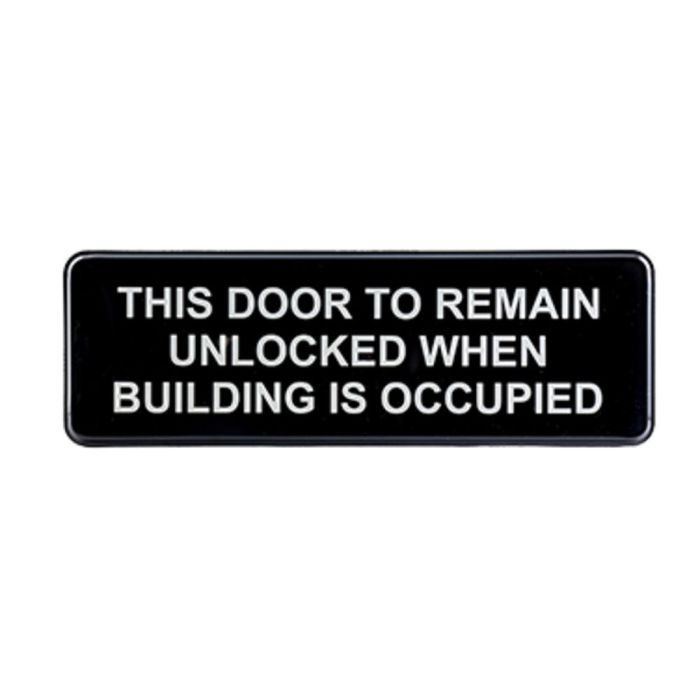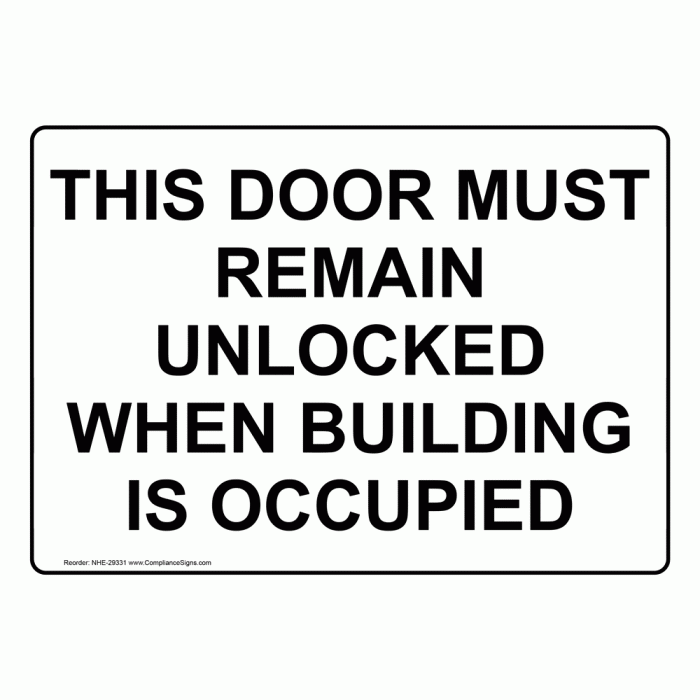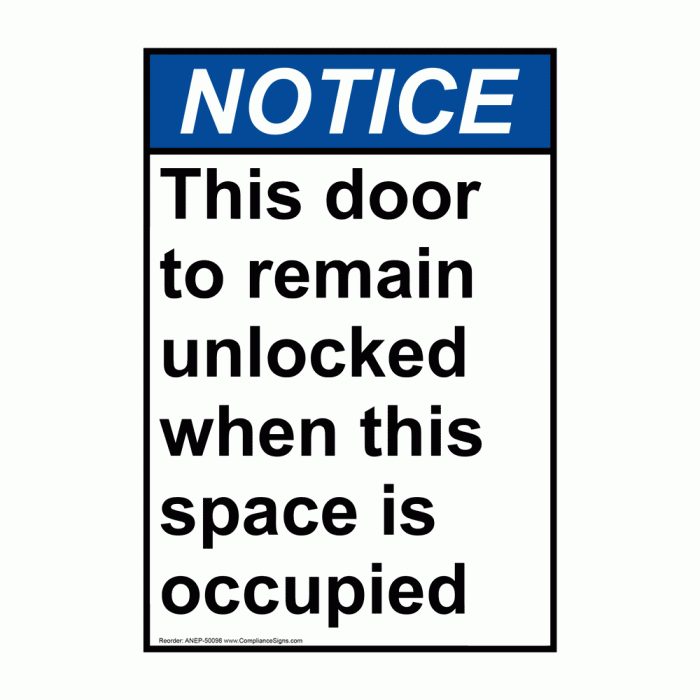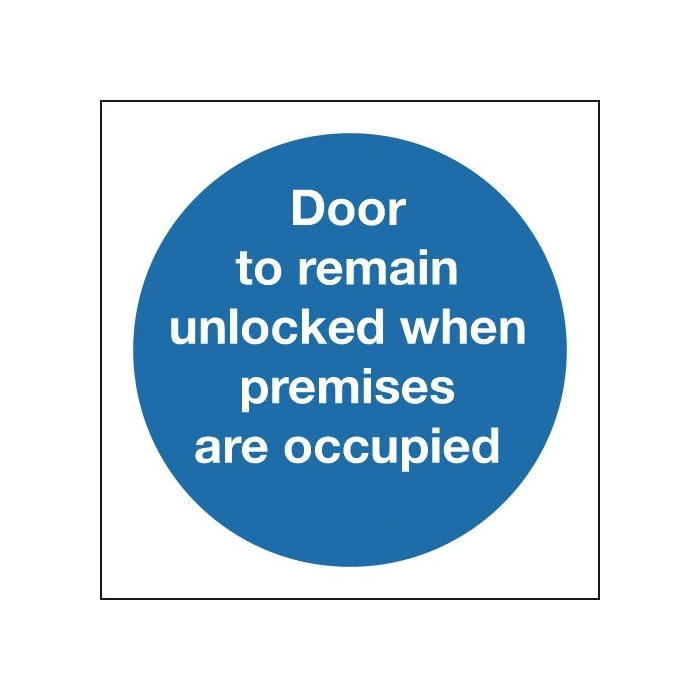This door to remain unlocked when this space is occupied. This policy is in place to ensure the safety and security of all occupants, as well as to comply with legal and regulatory requirements. This article will discuss the importance of keeping this door unlocked, the potential risks and benefits of doing so, and the procedures that must be followed to ensure compliance.
The second paragraph should provide descriptive and clear information about the topic
Accessibility Considerations

Ensuring that this door remains unlocked when the space is occupied is crucial for individuals with disabilities. An unlocked door allows for seamless access for those who may face physical or cognitive challenges.
For instance, individuals with mobility impairments, such as wheelchair users, require unobstructed passage through doorways. An unlocked door eliminates the need for assistance or the use of assistive devices, promoting independence and dignity.
Additionally, individuals with cognitive impairments may experience difficulty navigating complex locking mechanisms or remembering to lock or unlock doors. An unlocked door provides a safe and accessible environment for these individuals.
Safety and Security Implications
While accessibility is paramount, it is essential to address potential safety and security concerns associated with leaving a door unlocked. Unauthorized access, theft, or other security breaches can occur if the door is left open.
To mitigate these risks, it is recommended to implement additional security measures, such as:
- Installing an access control system that allows authorized individuals to enter and exit the space while preventing unauthorized access.
- Implementing clear policies for door usage, including guidelines on when and by whom the door should be locked or unlocked.
Legal and Regulatory Compliance
There may be legal or regulatory requirements that mandate the unlocking of this door when the space is occupied. These requirements vary depending on jurisdiction and building codes.
Non-compliance with these regulations can result in penalties, fines, or other legal consequences. It is essential to consult with legal counsel and building inspectors to ensure compliance.
Operational Procedures, This door to remain unlocked when this space is occupied
To ensure the door remains unlocked during occupancy, clear operational procedures should be established.
- Designate specific personnel responsible for unlocking and locking the door at the beginning and end of occupancy.
- Provide signage or visual cues to indicate when the door should be unlocked, such as a green light or a sign that reads “Door to Remain Unlocked.”
Communication and Training
Effective communication is crucial to ensure compliance with door unlocking procedures.
- Develop a communication plan to inform occupants about the importance of keeping the door unlocked when the space is occupied.
- Provide training to staff or visitors on the procedures for unlocking and locking the door, emphasizing the importance of accessibility and security.
Monitoring and Evaluation
To ensure the effectiveness of the procedures, it is essential to establish a system for monitoring compliance.
- Conduct regular audits or inspections to ensure the door is unlocked when it should be.
- Evaluate the effectiveness of the procedures and make adjustments as needed to improve accessibility while maintaining security.
FAQ: This Door To Remain Unlocked When This Space Is Occupied
Why is it important to keep this door unlocked when this space is occupied?
Keeping this door unlocked when this space is occupied is important for several reasons. First, it ensures that people with disabilities can access the space safely and easily. Second, it helps to prevent unauthorized access to the space, which can help to protect people and property.
Third, it complies with legal and regulatory requirements.
What are the risks of keeping this door unlocked?
There are some potential risks associated with keeping this door unlocked, such as unauthorized access to the space or theft. However, these risks can be mitigated by taking appropriate security measures, such as installing an access control system or implementing clear policies for door usage.
What are the procedures for ensuring that this door remains unlocked when this space is occupied?
The procedures for ensuring that this door remains unlocked when this space is occupied are as follows:
- The door should be unlocked at all times when the space is occupied.
- The door should be locked when the space is unoccupied.
- Only authorized personnel should have access to the key to unlock the door.
- Signage should be posted on the door indicating that it should be unlocked when the space is occupied.


